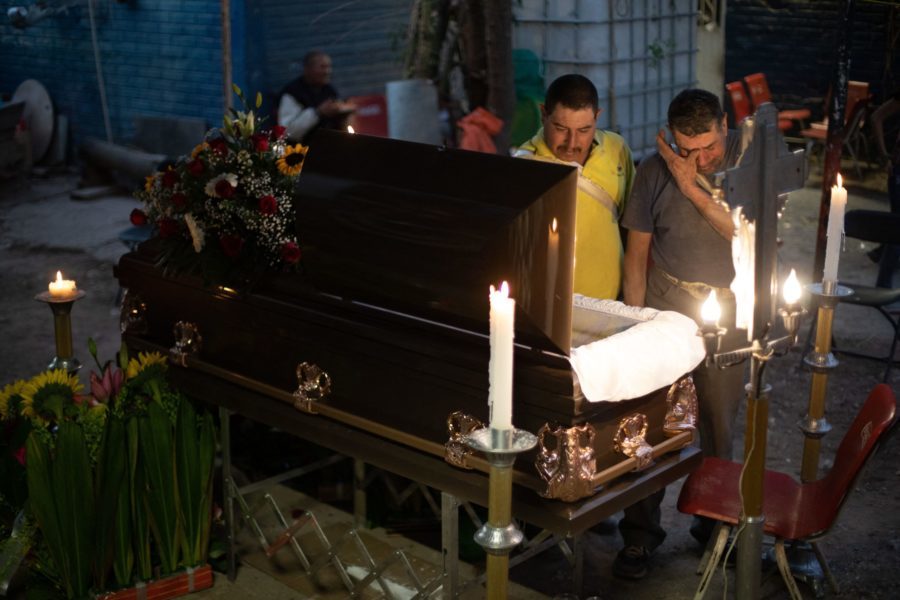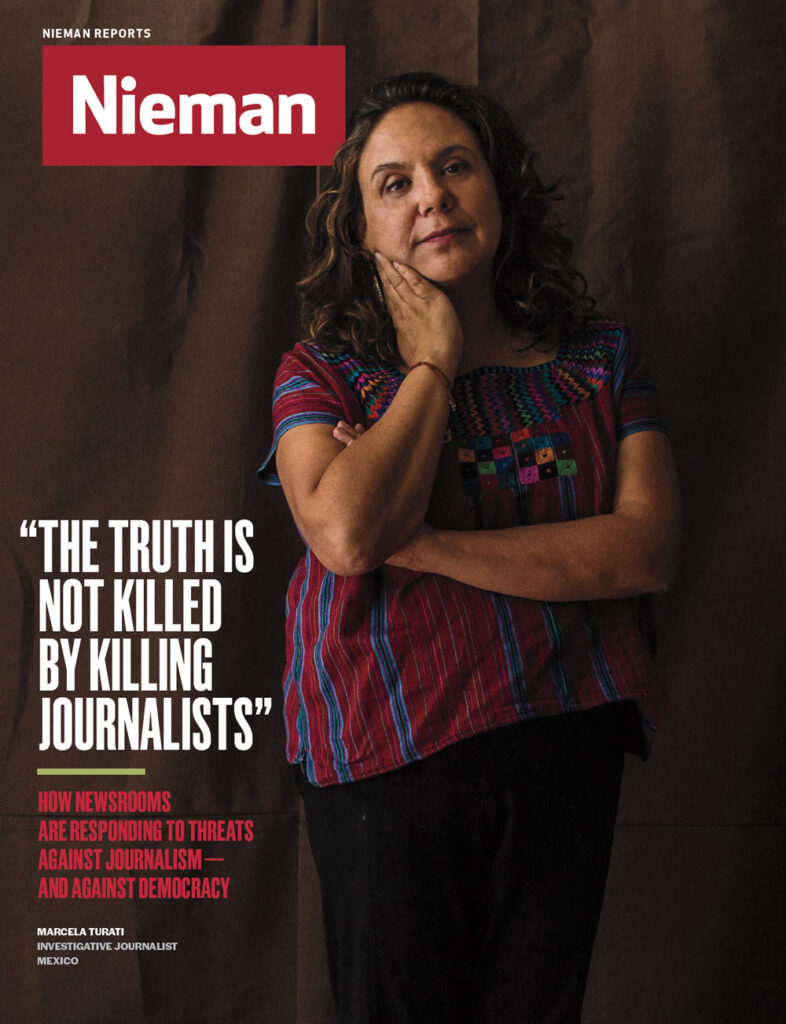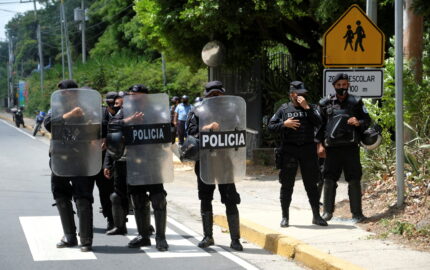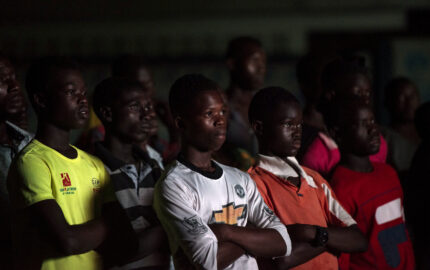Every time a reporter is killed, his or her death explodes in the hearts of the country’s other journalists — like an earthquake with expanding effect. It doesn’t matter whether they knew the victim or not. Each murder revives feelings of fear, terror, desperation, rage, and sadness that accumulate over time.
Every time a reporter is killed in Mexico, those of us who have organized to respond to this type of emergency send group messages from our cellphones in which we all ask each other, “Are you OK?”
For the reporters who live in the same city as the murdered colleagues, we ask if they need help paying funeral costs, circulating a political petition on social media, or mounting a protest. And above all, lately, do they need therapy for the trauma?
Wherever the latest killing happens, all of us who have had the experience of burying our colleagues must re-live the memories of fear, sadness, rage, and impotence. The impact is not limited to the families and friends of the victim. It opens a gash in the whole community.
For the last two decades, journalists have been confronted with the fact that you can be killed simply for doing your job, for investigating subjects that someone finds inconvenient. The authorities do not seriously investigate these crimes — 95 percent of the cases since 2011 remain unsolved. Journalists have become more anxious about their safety and their future, struggling with the trauma of losing colleagues.
The opening months of this year have not been easy. In the first five months of 2022, 11 Mexican journalists have been killed, most probably because of their profession: José Luis Gamboa Arenas, Alfonso Margarito Martínez Esquivel, Lourdes Maldonado López, Roberto Toledo, Heber López Vásquez, Juan Carlos Muñiz, Jorge Camero, and Armando Linares López. Luis Enrique Ramírez Ramos was killed by multiple blows to the head in early May, his body wrapped in plastic and left on the side of the road. Just days later, Yesenia Mollinedo Falconi and Sheila Johana García Olivera — both of whom worked for the website El Veraz — were shot to death but it’s unclear whether their job was the motive.
The total since 2000 is now more than 150 murdered — at least a dozen of them women, according to Article 19, a human rights group that promotes freedom of expression around the globe. (Several were under official governmental protection.) Twenty-nine have disappeared in roughly the last two decades.
In late 2006, the violence toward journalists increased after newly elected president Felipe Calderón declared what he called the “war on drugs,” militarizing public security to confront the cartels. It was a strategy that has caused (and is still causing) thousands of deaths and made Mexico a powder keg.
Since then, Mexican journalists have become war correspondents in our own land. The victims have been local reporters — only two murders have occurred in Mexico City — who mainly covered policing, organized crime, and political corruption, or have themselves lived in areas dominated by criminals. They have been killed in the course of their daily routines: outside their houses (sometimes in front of their children), outside of newsrooms, or in places they commonly frequent.
Each case has its own drama.
Alfonso Margarito Martínez Esquivel, a beloved photojournalist in Tijuana, was fatally shot while going through the procedure to access a government program that should have protected him against the threats he was receiving. He was the second reporter murdered in 2022.
One of the attendees at Margarito’s vigil was veteran journalist Lourdes Maldonado López, a respected professional and a mentor to many reporters, who had spent almost a decade pursuing an unfair labor practices suit against Jaime Bonilla, the owner of news outlet PSN, who served as governor of Baja California from 2019 to 2021. Maldonado López alleged she was fired without cause or compensation. After she won the case and announced she was about to reveal a web of corruption of her former boss, she was killed, too. She was the third journalist murdered in Mexico this year, shot in the face in her car as she arrived at her house.
At a televised press conference three years before she was killed, she appealed to President Andrés Manual López Obrador for protection, telling him she was afraid. She was under state protection, but no one was present when she was assassinated outside her home.
A week later, Roberto Toledo, who worked for the daily Monitor Michoacán, an online publication that exposed corruption and was the subject of frequent threats, was shot. When he was killed, the president’s spokesperson tweeted that Toledo was not a reporter — another example of the government trying to downplay the violence against journalists. This is a common tactic designed to disrupt investigations and distract from the government’s responsibility to solve the crime.
The Monitor’s editor, Armando Linares López, made a video that day in which, his voice breaking, he stated that the entire staff was under threat for exposing corruption. “We are not armed. We don’t carry weapons,” he said. “Our only defense is a pen, a pencil, a notepad.” On March 15, he was murdered at his home. He was shot at least eight times. Monitor Michoacán announced shortly after Linares was killed that it was closing because of security concerns.
On Feb. 10, Heber López, who exposed the corruption of a former local official, was shot five times and killed.
Each assassination, each disappearance, each attempted murder brings with it a torrent of desperate reactions: It forces other journalists to request protection from the government, or temporarily abandon their work, or leave their towns, cities, or states.
For the third year in a row, Mexico holds the disreputable title of being the deadliest country for the press, according to Reporters Without Borders. The country has a trend of assassinations which, if it continues, will likely break the worst of records, according to Article 19.
Part of the problem is the legal system is overwhelmed in general and doesn’t have the capacity to prosecute most crimes. But the murder of journalists is also a political issue. Statements from the executive branch fail to match the extent of the tragedy. Since taking office in 2018, President López Obrador’s administration has seen 33 journalists murdered. He has claimed that the murders are part of a campaign against him, to sabotage his administration.
In his daily morning press conferences, López Obrador calls investigative journalists looking into corruption in his government unpatriotic and tries to discredit the press, which he refers to as the enemy of the government. He routinely — and falsely — says the press lies and has gone after reporters investigating his sons’ possible conflicts of interest. After years of ignoring the threats to journalists, those in opposition to López Obrador are now using the spate of murders to criticize the administration, but Partido Revolucionario Institucional (PRI) and Partido Acción Nacional (PAN) politicians did nothing when they controlled the federal government, and they continue to do nothing when attacks occur in the states where they still govern. The problem is that such political rivalries obscure the basic issues and leave reporters even more at risk.
“We do not want government condolences! We are not interested in the solidarity of social networks from authorities or popular representatives! Save them! We demand that they assume their responsibilities and stop using us as cannon fodder for their political disputes!” was the message of the journalists’ collective Ni Uno Más (Not One More), from Michoacán, after the murder of Armando Linares López.
While the politicians use violence against journalists to score political points, the attacks against journalists continue. More of them have been displaced from their homes, and more have requested official government protection. The government program to protect journalists has declared itself overwhelmed: In the last three years, the number of people under protection has risen by 60 percent to 1,500 (nearly 500 of whom are journalists). The police who would provide the protection are often overworked and underpaid. The reporters displaced by threats have no dates for when they can return, nor resolutions of their cases, and they continue to wait far from their places of origin, without the ability to return.
Poor pay and difficult working conditions continue to expose journalists to more risks. The pandemic has only added to the difficulties. Against this backdrop, journalists still have to take on the tasks of organizing self-defense courses and demanding justice for their fallen colleagues. It also falls on us to take care of each other’s mental health and create space for therapy while we mourn the dead together.
Journalists continue to protest and have expanded the protests to dozens of cities throughout the country. Where one reporter is killed, collectives of reporters spring up to keep journalism alive.
Over the past few months, we have seen unprecedented protests by members of the profession. Some have stopped covering speeches in the Chamber of Deputies or in the Senate; in the morning press conference, they tell the president they will ask no questions, instead requesting a moment of silence for their murdered colleagues. Others protest in the forums of the Interior Department about the inadequate protection mechanism, while still others stand up in front of the president to read the names of fallen colleagues, or they protest with placards at press conferences or speeches they need to cover.
With little help on the horizon and no clear message of support for the profession coming from the administration, it appears as though the situation for journalists in Mexico may get worse before it gets better. Yet, journalists in Mexico are not giving up. As we gather to demand justice for our colleague, we take comfort in each other and our chant, “The truth is not killed by killing journalists!”
Marcela Turati, a 2017 Nieman Fellow, is a freelance investigative journalist covering the Mexican drug war and a founding member of QuintoElemento. She is the recipient of the 2013 Louis M. Lyons Award for Conscience and Integrity in Journalism and 2019 Maria Moors Cabot Prize.
Reporting at Risk
From Kashmir to Russia to Mexico and beyond, journalism is under threat. Reporters Without Borders estimates that nearly three-quarters of the 180 countries on its World Press Freedom Index either completely or partially block the work of newsrooms. The threats to journalists are physical, political and, especially under authoritarian regimes, increasingly existential. In our Reporting at Risk series, Nieman Reports is publishing essays by journalists who are managing to do vital independent reporting — often at great personal risk.



